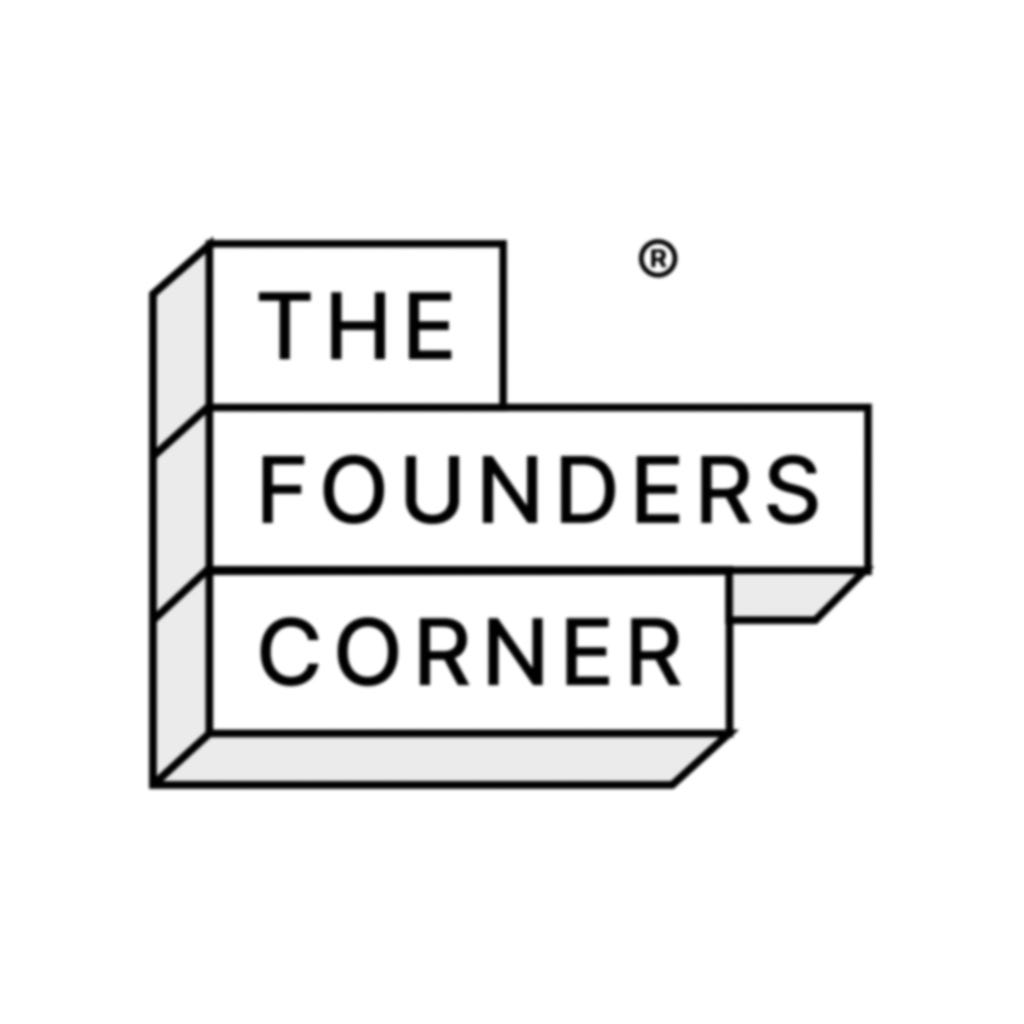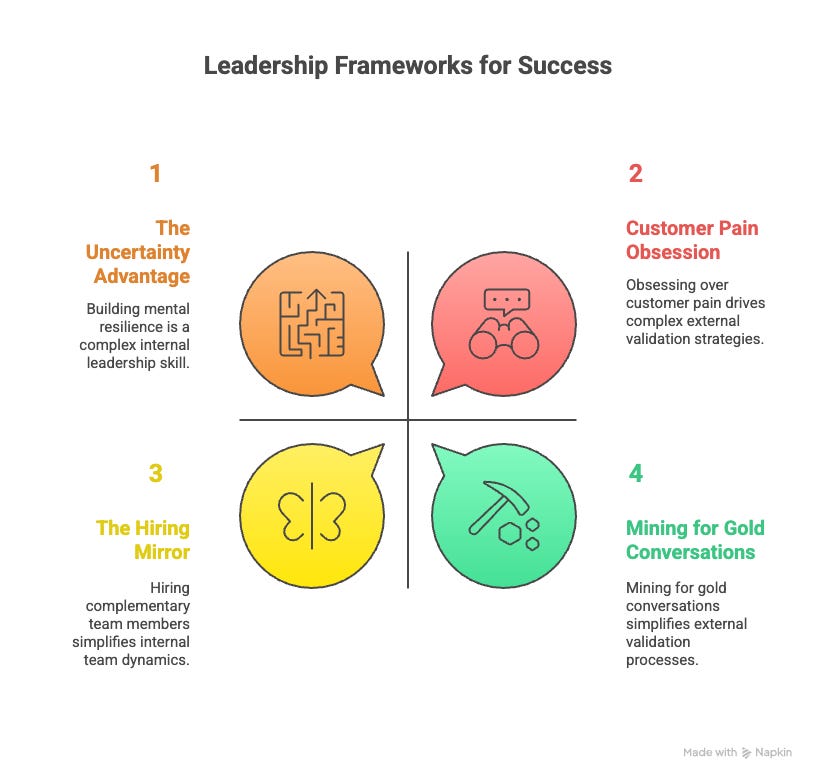How to Lead Like a $1B Venture Capitalist: Chris Tottman on Mastering Uncertainty and Validation (Part 1)
Why stress tolerance and ruthless focus separate thriving leaders from those who get stuck in uncertainty
Thanks for reading! Join leaders worldwide who are future-proofing their leadership with Premium access to exclusive tools, direct guidance, and our leadership community. Discover what you're missing here with a free trial (the next 50 subs. get 50% off for life).
I've spent years analyzing leadership frameworks, but I'd never sat down with someone who's invested in 500+ companies and seen billions in exits. So when the opportunity came to interview Chris Tottman, I knew I had to dig deeper than typical VC advice and uncover insights that would actually help the leaders I write for… nonprofit directors, pastors, business owners, and mission-driven executives who face uncertainty every day.
What started as professional curiosity about his insights has evolved into a Substack-born friendship built on multiple conversations about leadership, validation, and what actually works in the trenches of building something meaningful. This interview is different from my usual articles because I'm letting Chris's tested frameworks speak for themselves, while I translate his venture capital wisdom into principles any leader can apply.
Meet Chris Tottman: The Investor Who Built Before He Backed
Chris Tottman is the Founding GP at Notion Capital, managing over $1B in assets under management and having invested in 500+ founders across Europe's leading business software companies. But here's what makes him different: Chris built and scaled a $150M SaaS business before transitioning to venture capital, giving him unique insight from both sides of the table.
Beyond venture capital, he's the co-founder of the non-profit organization Included.vc (supporting underrepresented backgrounds in VC), founder of AlphaGraph.vc, co-author of "The Go to Market Handbook for B2B SaaS Leaders" and the upcoming “The Big Book of Brain Dumps,” which goes over over 70 battle-tested visual frameworks into actionable leadership tools.
He also publishes "The Founders Corner" on Substack alongsideRuben Dominguez Ibar, delivering weekly insights on raising capital and scaling startups.
When someone has seen both spectacular successes and devastating failures across hundreds of companies, they develop pattern recognition that most of us will never have. What Chris shared with me wasn't just investor advice, it was leadership wisdom that applies whether you're validating a new community program, testing a ministry idea, or expanding your business.
Now, a 1 min. note on why an interview post…
The Problem Every Leader Faces (But Few Admit)
Most leaders are drowning in research that never leads anywhere, spending months on initiatives that nobody actually wants.
Have you ever watched someone try to swim across a river with one arm doing the butterfly stroke and the other doing the breaststroke? They would thrash around, expend enormous energy, but make little progress. Eventually, they would drown from exhaustion.
That's exactly what happens to leaders who spread their focus across too many priorities while hoping their next initiative will somehow work without proper validation.
Chris Tottman, with his track record of 500+ investments and multiple exits, sees this leadership drowning every day.
"People underestimate what they can achieve in the long run BUT overestimate what they can achieve in the short term," he told me. "The short term misses can feel crushing vs simply being part of the learning process."
Here's what Chris revealed about why some leaders thrive while others burn out, presented through the following 4 frameworks:
Framework #1: The Uncertainty Advantage
Why pain tolerance beats perfect planning
The Question I Asked: "What separates leaders who thrive in uncertainty from those who get stuck?"
Chris's Answer Surprised Me.
"High pain threshold and in the business world, I mean a high threshold for stress, as change is constant," he explained.
This isn't about enduring suffering; it's about building the mental resilience to navigate constant change without losing focus.
The Gold, Silver, Bronze Rule
But here's where Chris gets practical. He applies something called Price's Law to leadership focus:
"Very few things ultimately pay off (Price's Law) and so I imagine a podium of Gold, Silver, and Bronze spots for strategy or things to focus on, NOT four or five spots. Be ruthless about what's in focus & resourced vs what's left in the parking lot for later."
Quick Assessment: Think about your current leadership priorities. How many "critical" initiatives are you trying to advance simultaneously? If it's more than three, you might be swimming with mixed strokes.
The Hiring Mirror
Chris's hiring insight applies whether you're staffing a nonprofit, building a church team, or scaling a business:
"If you're predisposed for the future, then hire complementary people who augment you - probably doers and implementers, but if you're more comfortable in a world that is fixed and controllable, then hire a future person - yes, those annoying types like me. They'll keep you relevant over a longer period of time."
💡 Immediate Action: Assess your team. Are you hiring people who complement your natural tendencies or people who mirror them?
Framework #2: Customer Pain Obsession
The foundation that changes everything
My Context: Since their last book, I wanted to understand what's evolved in Chris's thinking about validation and growth.
The Shift That Changes Everything:
"We truly believe the greatest value comes from what comes from an obsession with customer pain. The pain of buyers, users & personas, and how you work on discovering as much as validation. Product is 3rd or 4th," Chris emphasized.
The AI Acceleration Factor
Here's what's changed the game:
"What's changed in 2 years since the last book is AI has step changed and so now the speed to validate and mock up products or AB test landing pages has shrunk to almost zero & minimal technical costs & skills."
What This Means for You:
A nonprofit director can test program concepts with simple landing pages
A pastor can validate community needs through targeted surveys
A business leader can prototype services without massive upfront investment
The Universal Principle: Obsess over the pain you're solving, not the solution you're building.
Framework #3: Mining for Gold Conversations
How to validate without selling
The Question I Asked: "How should leaders approach validation conversations without being pushy?"
Chris Immediately Corrected My Assumption.
"These aren't sales conversations. These are mining for gold conversations. One of my Co-Authors, Paul, is a geologist and his first job was working in gold mines looking for seams of gold. You don't just bore holes anywhere you're looking for signals," he explained.
The Beatles Reality Check
Chris's approach starts with a humbling reality:
"I'm experimenting on a dozen things unlikely to ever see the light of day, and so the first important point is to remind ourselves that a single idea is unlikely to ever be valuable in the end. The analogy being that four teenagers from Liverpool took years to perfect just a single song that made the first Beatles album."
The Discovery Process
Step 1: Focus on Problems, Not Solutions.
"You validate the ideas by talking to the people about their problems, not by selling, telling, or evangelizing your hypothesis, as you just get nice people’s positive reactions as new validation."
Step 2: Seek Rejection
"You want rejection, pushback, or a clear 'no.' Those reactions surface the real pain points. During conversations, listen closely for unresolved tensions, unmet needs, and persistent frustrations. Rejection is a sign you're getting closer to a real problem worth solving."
Step 3: Don't Build Yet.
"Do not build. Go and ask deep-level questions with the people who have deep-seated problems. You're not looking for validation, you're looking for deeply crushing problems & fears from potential buyers and personas first."
Case Study: From Post to Program
How Chris built Included.vc using these principles
The Simple Test That Changed Everything:
Chris shared how he applied this validation framework to create Included.vc:
"The AB test was quite simple. I posted about 'the fact that VC was very powerful but very one dimensional in its make up - mostly highly educated white men.' That led to a post on - 'whether I should create a fellowship to help those from underrepresented backgrounds get into VC'. That single post in 2018 had 1000 comments and 150k impressions. At the time that was 10x my typical post - so demand was extraordinarily high."
The Validation Journey:
Test the problem (social media post)
Validate the demand (engagement metrics)
Investigate the solution (6 months of research)
Build with the right leader (hired Nikita Thakrar)
The Results Today:
"Fast forward today, the leading VCs back the fellowship, we have 10,000 applications per year, onboard about 150 per year, and get about 50 people per year into VC."
Framework #4: The Quiet Launch Strategy
Building your advisory community
The Insider Approach:
Instead of big launches, Chris advocates for "quiet launches" with 10-30 early adopters:
"I would create an advisory board of key decision makers & personas or a community that gathers regularly. They become Insiders to the problem discovery process and add to the design of solutions. It's incredible how easy it is to get prospective customers or partners to join these."
The Investment Standard
At Notion Capital, they expect this foundation:
"We'd expect a pre-seed and seed start-up to have at least 10 Customer Development Customers they're working with. These are buyers and prospects who have bought into the Founders' abilities to research their problems in the pursuit of finding a significant issue worth solving."
💡 Your Application: This approach works for any leadership context, from church leadership teams exploring new ministries to nonprofit boards designing community programs.
What's Coming in Part 2
Chris's "Holiday Exercise" forces unavailability to reveal delegation gaps, and what he discovered will surprise you.
In Part 2, we'll explore:
How he multiplies leadership impact without sacrificing quality
The framework for sustainable growth that separates unicorns from flame-outs
How AI is reshaping the fundamental skills leaders need
Details about their upcoming book that makes VC insights applicable for any mission-driven leader
If You Only Remember This:
Embrace uncertainty with ruthless focus: Use the Gold, Silver, Bronze framework, never more than three strategic priorities
Obsess over customer pain, not your solution: Lead with deep problem discovery, not product evangelism
Mine for gold in conversations: Seek crushing problems and fears, not validation of your ideas
Build advisory communities quietly: Get 10-30 insiders committed to the problem discovery process before any public launch
How are you currently validating your leadership initiatives? Share below!
PS: Many subscribers get their Premium membership reimbursed through their company’s professional development $. Use this template to request yours.
Let’s Connect
I love connecting with people. Please use the following connect, collaborate, if you have an idea, or just want to engage further:
LinkedIn / Community Chat / Email / Medium








Been an extraordinary opportunity to work with you on this article Joel - the book is now Live - you're the first to review it ! Thanks so much - Here's the Link - https://book-of-braindumps.com/
Really fascinating read, I especially resonated with the opinions of “goldmine” and “quiet launch”. Definitely coming back for the next round to soak up more of Chris’ thinking!